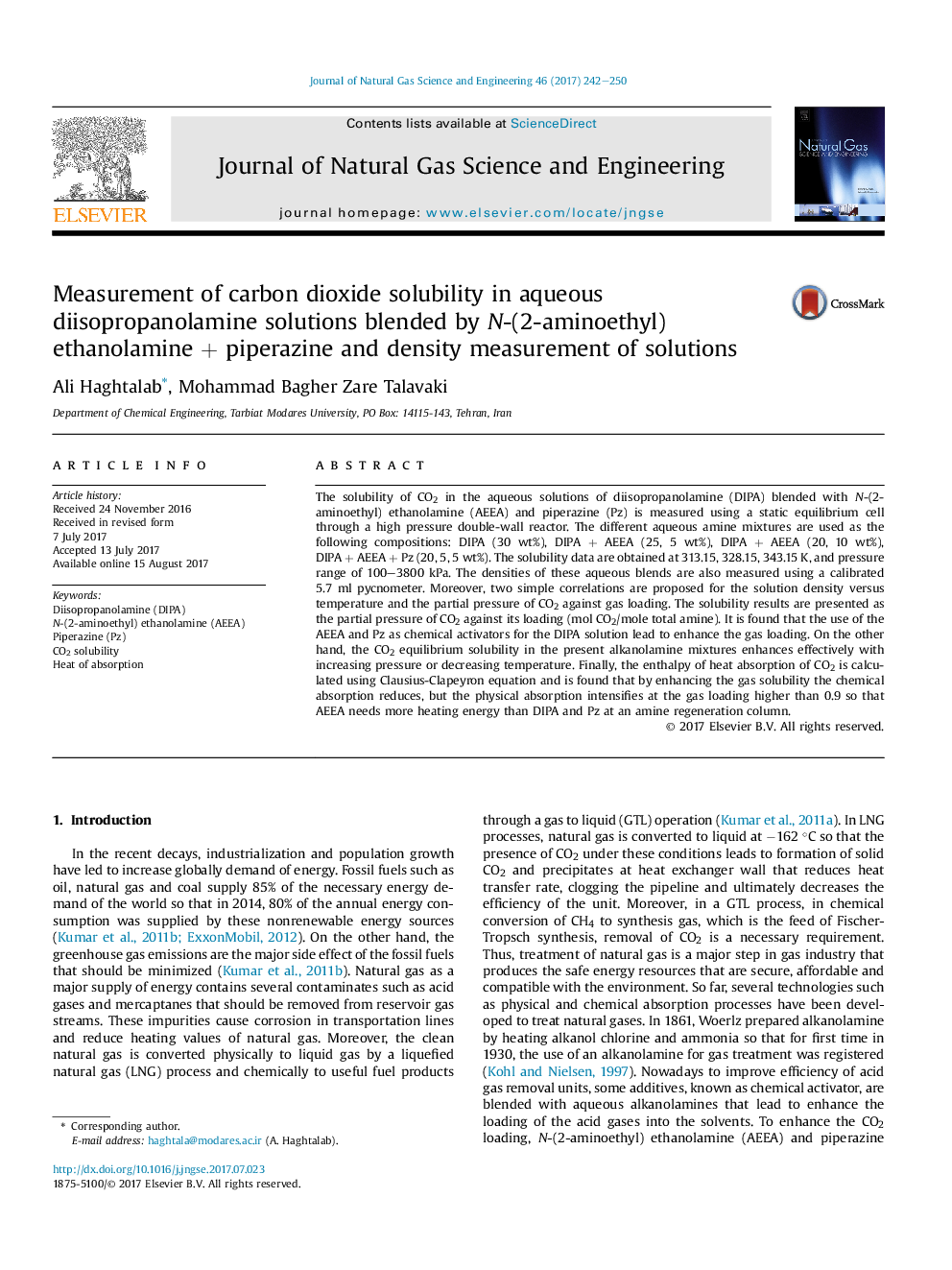| Article ID | Journal | Published Year | Pages | File Type |
|---|---|---|---|---|
| 5484947 | Journal of Natural Gas Science and Engineering | 2017 | 9 Pages |
Abstract
The solubility of CO2 in the aqueous solutions of diisopropanolamine (DIPA) blended with N-(2-aminoethyl) ethanolamine (AEEA) and piperazine (Pz) is measured using a static equilibrium cell through a high pressure double-wall reactor. The different aqueous amine mixtures are used as the following compositions: DIPA (30Â wt%), DIPAÂ +Â AEEA (25, 5Â wt%), DIPAÂ +Â AEEA (20, 10Â wt%), DIPAÂ +Â AEEAÂ +Â Pz (20, 5, 5Â wt%). The solubility data are obtained at 313.15, 328.15, 343.15Â K, and pressure range of 100-3800Â kPa. The densities of these aqueous blends are also measured using a calibrated 5.7Â ml pycnometer. Moreover, two simple correlations are proposed for the solution density versus temperature and the partial pressure of CO2 against gas loading. The solubility results are presented as the partial pressure of CO2 against its loading (mol CO2/mole total amine). It is found that the use of the AEEA and Pz as chemical activators for the DIPA solution lead to enhance the gas loading. On the other hand, the CO2 equilibrium solubility in the present alkanolamine mixtures enhances effectively with increasing pressure or decreasing temperature. Finally, the enthalpy of heat absorption of CO2 is calculated using Clausius-Clapeyron equation and is found that by enhancing the gas solubility the chemical absorption reduces, but the physical absorption intensifies at the gas loading higher than 0.9 so that AEEA needs more heating energy than DIPA and Pz at an amine regeneration column.
Related Topics
Physical Sciences and Engineering
Earth and Planetary Sciences
Earth and Planetary Sciences (General)
Authors
Ali Haghtalab, Mohammad Bagher Zare Talavaki,
